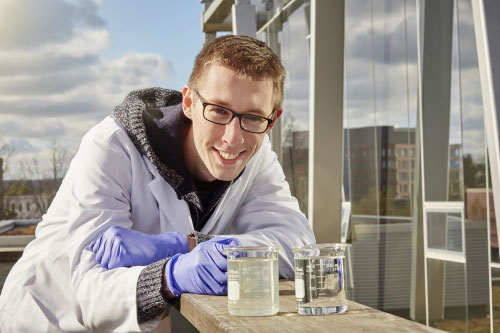| Posted: Nov 23, 2015 |
New, inexpensive way to clean water from oil sands production with nanoparticles
(Nanowerk News) Researchers have developed a process to remove contaminants from oil sands wastewater using only sunlight and nanoparticles that is more effective and inexpensive than conventional treatment methods (Chemosphere, "Solar photocatalytic degradation of naphthenic acids in oil sands process-affected water").
|
|
Frank Gu, a professor in the Faculty of Engineering at the University of Waterloo and Canada Research Chair in Nanotechnology Engineering, is the senior researcher on the team that was the first to find that photocatalysis -- a chemical reaction that involves the absorption of light by nanoparticles -- can completely eliminate naphthenic acids in oil sands wastewater, and within hours. Naphthenic acids pose a threat to ecology and human health. Water in tailing ponds left to biodegrade naturally in the environment still contains these contaminants decades later.
|
 |
| Tim Leshuk, University of Waterloo.
|
|
"With about a billion tonnes of water stored in ponds in Alberta, removing naphthenic acids is one of the largest environmental challenges in Canada," said Tim Leshuk, a PhD candidate in chemical engineering at Waterloo. He is the lead author of this paper and a recipient of the prestigious Vanier Canada Graduate Scholarship. "Conventional treatments people have tried either haven't worked or if they have worked they've been far too impractical or expensive to solve the size of the problem. Waterloo's technology is the first step of what looks like a very practical and green treatment method."
|
|
Unlike treating polluted water with chlorine or membrane filtering, the Waterloo technology is energy-efficient and relatively inexpensive. Nanoparticles become extremely reactive when exposed to sunlight and break down the persistent pollutants in their individual atoms, completely removing them from the water. This treatment depends on only sunlight for energy, and the nanoparticles can be recovered and reused indefinitely.
|
|
Next steps for the Waterloo research include ensuring that the treated water meets all of the objectives Canadian environmental legislation and regulations required to ensure it can be safely discharged from sources larger than the samples, such as tailing ponds.
|

